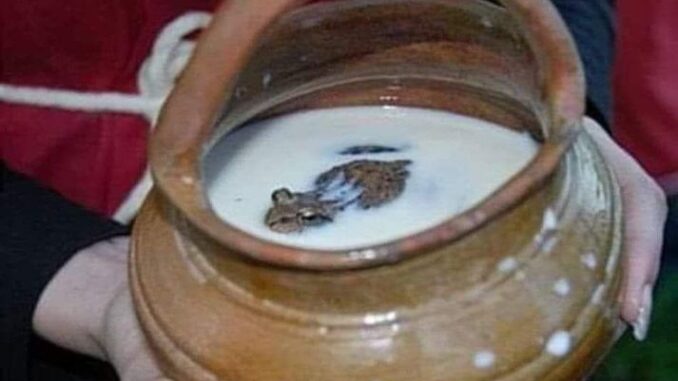
In the past, each community had its own method of preservation. Ancient communities in Russia and Finland found a clever and brilliant solution to preserving milk: Dropping brown frogs, called Rana temporaria, into the milk…
A scientific study conducted in 2013 proved that this method works. The study showed that proteins such as Brevinin 1Tb, synthesized from the skin of frogs (and other amphibians), have the ability to inhibit the growth of certain types of bacteria. Thus, the Russians and Finns discovered, albeit through trial and error, that they could fight bacteria by using proteins from frog skin to preserve milk.
Indeed, a 2013 scientific study found that brown frogs (Rana temporaria) and other amphibians can help preserve milk thanks to proteins in their skin, specifically peptides like Brevinin 1Tb. These proteins are known to inhibit the growth of bacteria and other microorganisms that cause food spoilage.
This story is related to a traditional method used by ancient communities in Russia and Finland, where frogs were placed in milk to slow down spoilage and keep the milk fresher for longer. The method appears to have been developed over generations based on experience and experimentation, although there was no clear scientific understanding at the time.
According to the study, peptides from frog skin have antibacterial properties and can inhibit the growth of certain bacteria that cause milk spoilage, helping to increase the shelf life of the product. These peptides, especially Brevinin 1Tb, are found in the skin of frogs and have been shown to kill bacteria, helping to preserve milk.
So, the Russians and Finns’ use of frogs to preserve milk is a method based on an understanding of the natural properties of animals, and modern science has confirmed its effectiveness.